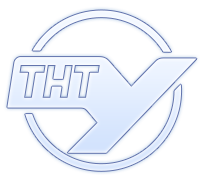|
|
|
Software requirements profile: life cycle and his relation with development processes
| Назва | Software requirements profile: life cycle and his relation with development processes |
| Назва англійською | Software requirements profile: life cycle and his relation with development processes |
| Автори | Oleksndr Gordieiev |
| Принадлежність | Banking University, Kyiv, Ukraine |
| Бібліографічний опис | Software requirements profile: life cycle and his relation with development processes / Oleksndr Gordieiev // Scientific Journal of TNTU. — Tern. : TNTU, 2020. — Vol 97. — No 1. — P. 133–144. |
| Bibliographic description: | Gordieiev O. (2020) Software requirements profile: life cycle and his relation with development processes. Scientific Journal of TNTU (Tern.), vol 97, no 1, pp. 133–144. |
| DOI: | https://doi.org/10.33108/visnyk_tntu2020.01.133 |
| УДК |
004.4 |
| Ключові слова |
software requirements profile life cycle, software requirements profile, software profiling, software development processes, software requirements profile gaps chains. |
|
Priority task of software development is forming of set of requirements for him. Process of forming such set of software requirements named software requirements profiling and his product (set of requirements) named software requirements profile. It should be noted, that profiling can use for other objects of profiling, for example, for forming software characteristics, potential risks of software, software tests, techniques and metrics of software quality verification. Analysis of software development processes, which describe in [1] are represented in article. Further, processes for which profiling is mandatory is defined. As result, between profiling different objects and software development processes establish some conformities. Following software life cycle models: cascade, V-shaped, spiral are analysed. Between software life cycle stages and different profiling objects is established conformity. Implementation of software requirements profiling i.e. forming software requirements profile (this is product of software requirements profiling process) is very important and responsible task for expert. It is connect to the fact that software requirements profiling defines software requirements profile quality – particular «basis» or «foundation» of developed software. The objective of the work is representation and describe life cycle of software requirements profile taking into account possible gaps. Software requirements profile life cycle, which includes following 6 stages: requirements profile in thinking (RPT), requirements profile formulated (RPF), requirements profile for representing (RPR), requirements profile for developing (RPD), requirements profile in software (RPS), requirements profile after verification (RPV) are represented in article. In during transition his from stage to stage according to life cycle of software requirements profile can be some differences (gaps) in software requirements profile. In this connection, full set of chains of differences in software life cycle profile requirements software was formed. Examples of describe such chains were represented also. |
| ISSN: | 2522-4433 |
| Перелік літератури |
-
International standard. ISO/IEC/IEEE 12207:2017 Systems and software engineering – Software life cycle processes. 2017. 145 p.
-
Humphrey W., Daughtrey T. The software quality profile. Fundamental Concepts for the Software Quality Engineer. American Society for Quality (ASQ). 2001. Р. 3–17.
-
Kharchenko V., Gordieiev O., Fedoseeva A. Profiling of Software Requirements for the Pharmaceutical Enterprise Manufacturing Execution System. Applications of Computational Intelligence in Biomedical Technology. Studies in Computational Intelligence. 2016. Vol. 606. P. 67–93.
-
Andrashov A. A., Kremenchutskiy YU. A., Kharchenko V. S. Analiz modeley predstavleniya trebovaniy k programmnomu obespecheniyu pri ikh profilirovanii. Radioyelektronni i komp’yuterni sistemi. 2009. № 7 (41). Р. 186–191.
-
Zhen Yu. Chen, Shengji Yao, Jian Qiang Lin, Yong Zeng, Armin Eberlein Yu Chen Zhen. Formalisation of product requirements: From natural language descriptions to formal specifications. International Journal of Manufacturing Research (IJMR). 2007. Vol. 2. No. 3. Р. 362–387.
-
Shostak I. V. Butenko YU. I. Podkhod k avtomatizatsii protsessa formirovaniya normativnogo profilya pri sertifikatsii programmnykh produktov. Sistemy obrobki informatsii. 2010. № 8 (89). Р. 122–126.
-
Andrashov A. A. Taksonomicheskiye modeli profilirovaniya trebovaniy informatsionno-upravlyayushchikh sistem kriticheskogo primeneniya. Radíoyelektronni i komp’yuterni sistemi. 2010. № 7 (48). Р. 104–108.
-
Andrashov A. A. Fasetno-iyerarkhicheskiye semanticheskiye struktury v zadachakh obespecheniya kachestva programmnogo obespecheniya. Integrirovannyye tekhnologii v mashinostroyenii “ÍKTM-2008”: mater. Mizhnar. nauk.-tekhn. konf. (m. Kharkív, 2008.). Kharkív, 2008. T. 2. Р. 204.
-
Nayan B. Ruparelia Software development lifecycle models. ACM SIGSOFT Software Engineering Notes. 2017. Vol. 35. Num. 3. Р. 8–13.
-
Meyer B., Bruel J.-M., Ebersold S., Galinier F., Naumchev A. Towards an Anatomy of Software Requirements: In proceedings of the 51st International Conference, TOOLS 2019 (Innopolis, Russia, October 15–17. 2019.). Innopolis, 2019. Р. 10–40.
-
Richard F. Schmidt Understanding Software Requirements. Software Engineering: Architecture-driven Software Development. 2013. Р. 121–137.
-
Nazaruka E., Osis J. The Formal Reference Model for Software Requirements. Part of the Communications in Computer and Information Science book series (CCIS). 2018. Vol. 1023. Р. 352–372.
-
Hussain S. N., Siddiqui A. T. Software Requirements and Process Models. LAP Lambert Academic Publishing. 2017. 68 p.
-
Innab N., Kayed A., Sajeev A. S. M. An ontology for software requirements modelling: In proceedings of the IEEE International Conference on Information Science and Technology (Hubei, China, March 23–25, 2012.). Hubei, 2012. Р. 485–490.
-
Gordieiev O., Kharchenko V., Fominykh N., Sklyar V. Evolution of software Quality Models in Context of the Standard ISO 25010: In proceedings of the International Conference on Dependability on Complex Systems DepCoS – RELCOMEX (DepCOS) (Brunow, Poland, June 30 July 4, 2014.). Brunow, 2014. Р. 223–233.
|
| References: |
-
International standard. ISO/IEC/IEEE 12207:2017 Systems and software engineering – Software life cycle processes. 2017. 145 p.
-
Humphrey W., Daughtrey T. The software quality profile. Fundamental Concepts for the Software Quality Engineer. American Society for Quality (ASQ). 2001. Р. 3–17.
-
Kharchenko V., Gordieiev O., Fedoseeva A. Profiling of Software Requirements for the Pharmaceutical Enterprise Manufacturing Execution System. Applications of Computational Intelligence in Biomedical Technology. Studies in Computational Intelligence. 2016. Vol. 606. P. 67–93.
-
Andrashov A. A., Kremenchutskiy YU. A., Kharchenko V. S. Analiz modeley predstavleniya trebovaniy k programmnomu obespecheniyu pri ikh profilirovanii. Radioyelektronni i komp’yuterni sistemi. 2009. № 7 (41). Р. 186–191.
-
Zhen Yu. Chen, Shengji Yao, Jian Qiang Lin, Yong Zeng, Armin Eberlein Yu Chen Zhen. Formalisation of product requirements: From natural language descriptions to formal specifications. International Journal of Manufacturing Research (IJMR). 2007. Vol. 2. No. 3. Р. 362–387.
-
Shostak I. V. Butenko YU. I. Podkhod k avtomatizatsii protsessa formirovaniya normativnogo profilya pri sertifikatsii programmnykh produktov. Sistemy obrobki informatsii. 2010. № 8 (89). Р. 122–126.
-
Andrashov A. A. Taksonomicheskiye modeli profilirovaniya trebovaniy informatsionno-upravlyayushchikh sistem kriticheskogo primeneniya. Radíoyelektronni i komp’yuterni sistemi. 2010. № 7 (48). Р. 104–108.
-
Andrashov A. A. Fasetno-iyerarkhicheskiye semanticheskiye struktury v zadachakh obespecheniya kachestva programmnogo obespecheniya. Integrirovannyye tekhnologii v mashinostroyenii “ÍKTM-2008”: mater. Mizhnar. nauk.-tekhn. konf. (m. Kharkív, 2008.). Kharkív, 2008. T. 2. Р. 204.
-
Nayan B. Ruparelia Software development lifecycle models. ACM SIGSOFT Software Engineering Notes. 2017. Vol. 35. Num. 3. Р. 8–13.
-
Meyer B., Bruel J.-M., Ebersold S., Galinier F., Naumchev A. Towards an Anatomy of Software Requirements: In proceedings of the 51st International Conference, TOOLS 2019 (Innopolis, Russia, October 15–17. 2019.). Innopolis, 2019. Р. 10–40.
-
Richard F. Schmidt Understanding Software Requirements. Software Engineering: Architecture-driven Software Development. 2013. Р. 121–137.
-
Nazaruka E., Osis J. The Formal Reference Model for Software Requirements. Part of the Communications in Computer and Information Science book series (CCIS). 2018. Vol. 1023. Р. 352–372.
-
Hussain S. N., Siddiqui A. T. Software Requirements and Process Models. LAP Lambert Academic Publishing. 2017. 68 p.
-
Innab N., Kayed A., Sajeev A. S. M. An ontology for software requirements modelling: In proceedings of the IEEE International Conference on Information Science and Technology (Hubei, China, March 23–25, 2012.). Hubei, 2012. Р. 485–490.
-
Gordieiev O., Kharchenko V., Fominykh N., Sklyar V. Evolution of software Quality Models in Context of the Standard ISO 25010: In proceedings of the International Conference on Dependability on Complex Systems DepCoS – RELCOMEX (DepCOS) (Brunow, Poland, June 30 July 4, 2014.). Brunow, 2014. Р. 223–233.
|
| Завантажити |  |
|




